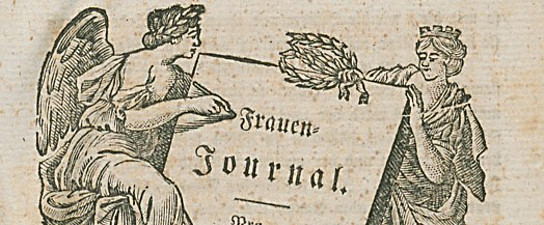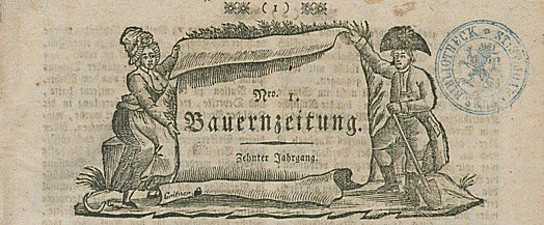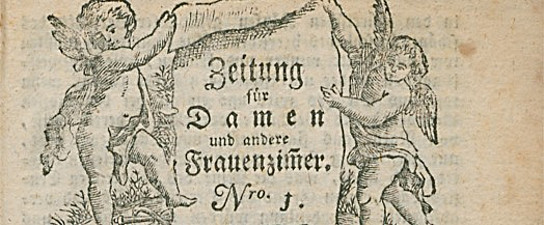The Project
The Participatory Journalism Project in Michael Hermann Ambros’ Periodical Media is an innovative contribution to the history of media and communication in Central Europe at the end of the 18th century. A media ecosystem that was lively and well connected with the international flow of news developed in the Habsburg monarchy for a short time span in the 1780s and at the beginning of the 1790s. Characteristic for Graz’ media landscape was its diversity and range of highly specialised newspapers and magazines.
It was in this environment in which Michael Hermann Ambros (1750-1809) proved to be an extraordinary figure: He was one of the outstanding journalists in the German-speaking world around 1800. His “Bauernzeitung” (“Peasant Newspaper”) (1786-1796) is considered one of the best of its time. The “Graz Women’s Journal” (“Grazer Frauenjournal”) (1792-1797) also belonged to his media empire from 1795 onwards. It was one of the first periodicals that targeted a female audience in the Habsburg monarchy. The editor distinguished himself by drawing on a broad basis of information for the articles in his periodicals in the highly competitive market for news. Ambros’ critical approach to these sources of information shines through in his comments, in introductory or concluding remarks, and in a critical assessment of the quality of the information. Correspondence, a unique selling point in contrast to most contemporary newspapers, was emphasised and Ambros makes the editorial practices transparent. Furthermore, it was the public and open communication with contributors to the newspaper and printed responses to the readers that stands out in the context of contemporary news culture. A scholarly study makes it possible to gain insight into regional and national journalistic practices.
A statistical study analyses the interplay of the two media forms (the political newspaper as well as the entertaining and educative appendix and the advertising paper). This holistic approach represents an innovation. The focus will be on the media and the correspondents that cooperated with Ambros. Of particular interest are the personal and professional contacts as well as the media usage of the correspondents and their relationship with the editor. Noteworthy in the case of female correspondents are their active contributions to all three parts of the journal. The Actor-media theory serves as the theoretical framework for this study. Ambros’ contact with other media from today’s Austria, Germany, Slovenia, Italy and Slovakia will provide useful regional and national comparisons. Studies in the Styrian State Archives on censorship and postal services will complement the analytical work on the media coverage in Ambros’ journals.
The study of the texts in the journals expands beyond the typical focus on major events. It will comprise social, economic and cultural contexts. False reporting, their causes and strategies of dealing with incorrect information are at the center of interest. Furthermore, the study pays close attention to the influence and importance of feelings on the part of the readers. Articles for a female audience will go beyond texts in favor of traditional images of women. Ambros’ strategies of combining entertaining and educative components in conveying news and background information both to female readers and to a male readership from the lower classes will be shown. The study will uncover the role of emotions, especially in the field of advertising and to this end will draw on the young field of emotional history.


